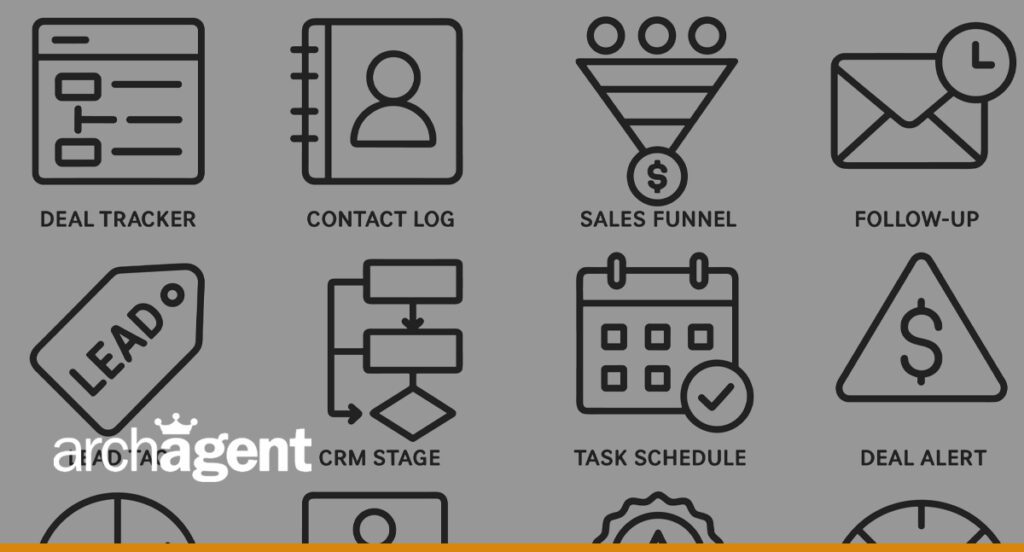
In real estate, generating leads is only half the battle. Converting them into clients is where the real work begins. The best agents know that without a consistent follow-up system, even the most promising leads can slip away.
A well-defined follow-up process ensures you stay top-of-mind with prospects, build trust, and increase your chances of winning their business. Here’s how to develop and maintain a follow-up system that works.
- Understand Why Lead Follow-Up Matters
- Segment Your Leads for Targeted Communication
- Establish a Clear Timeline for Follow-Up
- Mix Your Communication Channels
- Add Value With Every Touchpoint
- Automate Without Losing the Personal Touch
- Track and Refine Your System
Understand Why Lead Follow-Up Matters
Unfortunately, many agents feel that if they are just persistent enough, they will outlast other agents who are vying for a client’s attention. However, effective follow-up also requires the right timing, trust, and relationship-building. Most homebuyers and sellers are going to choose the person who earns their confidence.
A quick, professional response after the initial contact signals that you are reliable and can help keep your competition at bay. On the other hand, trying to be a prospect’s “friend” can ruin your chances of winning their business. Friendship must form organically. You are better off leading with value and professionalism.
Segment Your Leads for Targeted Communication
Chasing down every prospect with the same level of enthusiasm and effort is going to leave you burnt out. Instead, you must acknowledge that not all leads are created equal. Segment your database into categories such as:
- Hot Leads: Ready to buy or sell within 30-60 days
- Warm Leads: Interested but not ready to act yet
- Cold Leads: Early in the process, or just gathering information
Responding too slowly to leads who are ready now will cost you deals. On the other hand, bombarding people who are still in the early stages of the process can be off-putting. Segmenting your audience gives you a chance to tailor your messaging and follow-up frequency based on each group’s timeline and needs.
Establish a Clear Timeline for Follow-Up
Consistency is key. Here are some basic strategies for structuring your follow-up timeline:
- Respond to new leads within five minutes whenever possible
- Reach out daily or every other day during the first week
- Send weekly follow-ups in weeks 2-4
- Check in biweekly or monthly after the four-week mark until your lead is ready
A CRM or automated follow-up tool can help you stay on schedule without letting contacts fall through the cracks.
Mix Your Communication Channels
Your prospects have different preferences for how they receive information. While many of these preferences follow generational lines, there are always outliers. With that in mind, ask prospects about their preferred form of communication during the lead capture process.
To maximize engagement, use a combination of:
- Phone calls
- Text messages
- Personalized emails
- Direct mail
- Social media DMs
Rotating channels helps you stay visible and accessible without overwhelming leads with repetitive messages. Unless a lead has shown strong interest in connecting with you, it’s best to use less intrusive options early on. For instance, email or social media DMs may be viewed as less pushy than phone calls.
Add Value With Every Touchpoint
If you are going to reach out to a prospect, make sure you deliver value. The quickest way to lose a lead’s interest is to contact them without offering something useful. Instead of just asking, “Are you ready to move forward?” provide market updates or home-buying or selling tips.
If you already have an idea about what a client is looking for, such as the neighborhood they are interested in or their home wish list, consider sending them some listings that match their preferences. When leads associate your name with helpful information, they’re more likely to reach out when it’s time to act.
Automate Without Losing the Personal Touch
Automation reduces the risk of missed opportunities and keeps your follow-up process consistent. However, it shouldn’t replace personalized communication. Use automation to:
- Schedule reminders
- Send templated check-ins
- Deliver market reports or tips
Then, take time to personalize your responses based on each lead’s preferences and timeline. If you have had in-depth conversations with them, lean on that information to personalize your content.
Track and Refine Your System
A follow-up system should evolve with your business. Review your conversion rates regularly and identify where leads are stalling. Are you losing them after the first contact? Are certain messages prompting more replies? Analyze this data to refine your system for maximum impact.
Bringing It All Together
The most successful real estate agents don’t leave follow-up to chance. They hustle and use a repeatable process that ensures every lead gets the right message at the ideal time.
By segmenting your leads and offering value at every turn, you’ll increase both your conversion rates and your reputation as an agent who delivers. The result is sustainable business growth, increased referrals, and happy clients.
Unlock the full potential of your real estate business with our portfolio of sales side prospecting tools. From neighborhood data to AI-Powered Recommended Seller Lead Lists, stay ahead of your competition with our powerful technologies and leads designed to help agents succeed and prosper.

Steve Cortez is a seasoned real estate professional with decades of experience and owner of ArchAgent. ArchAgent brings together the tools and resources the country’s top real estate agents rely on in a single package for a low cost.